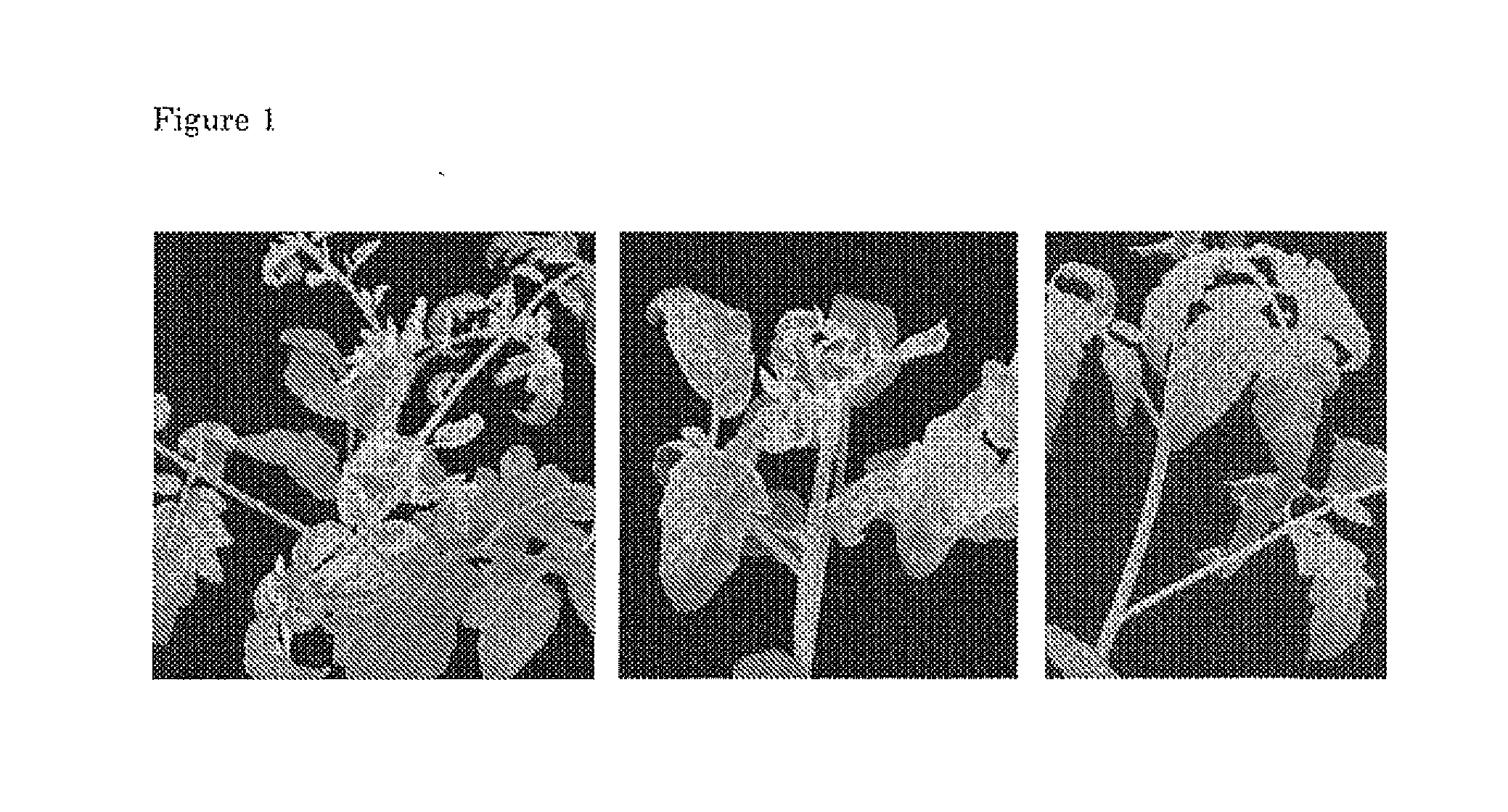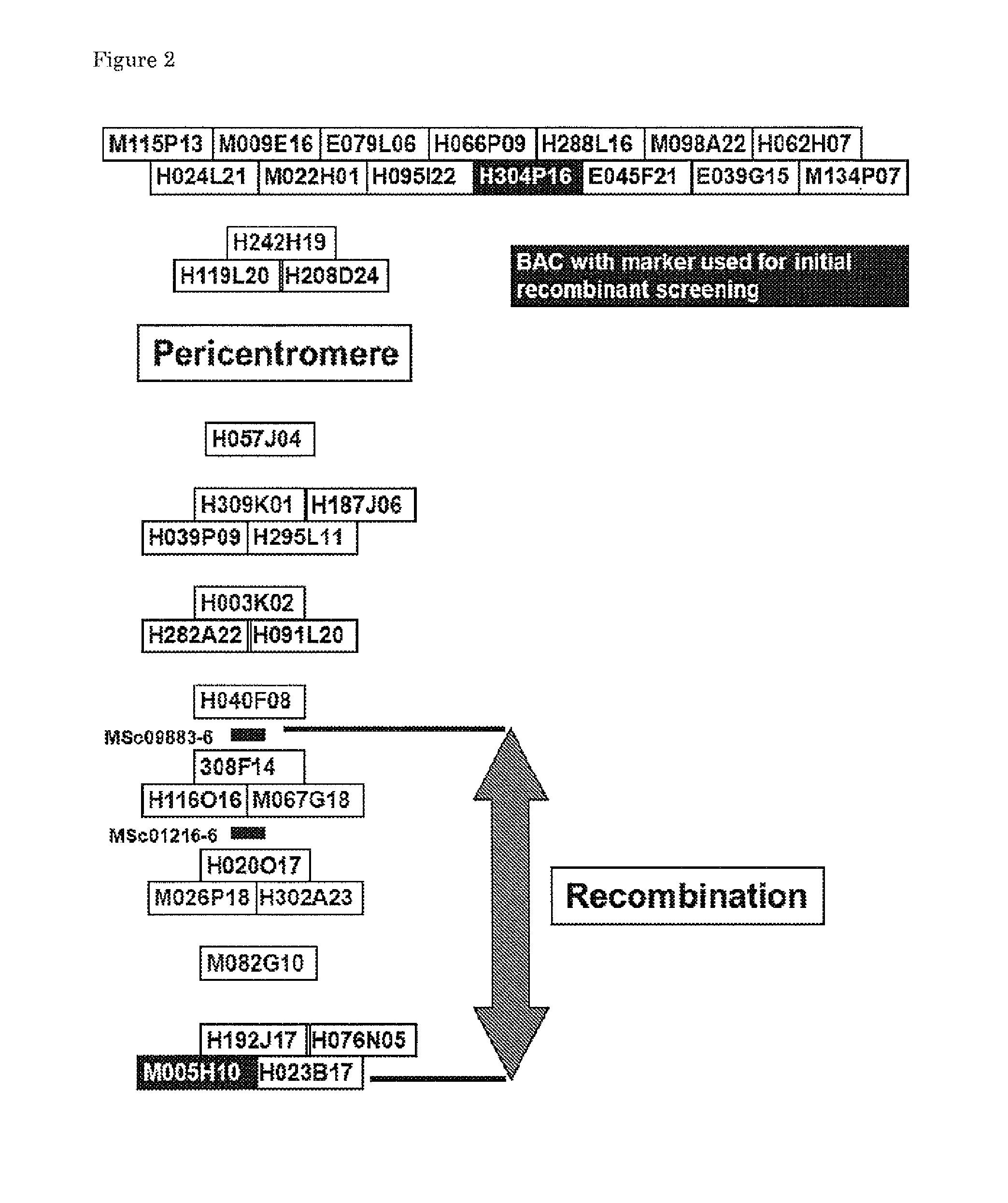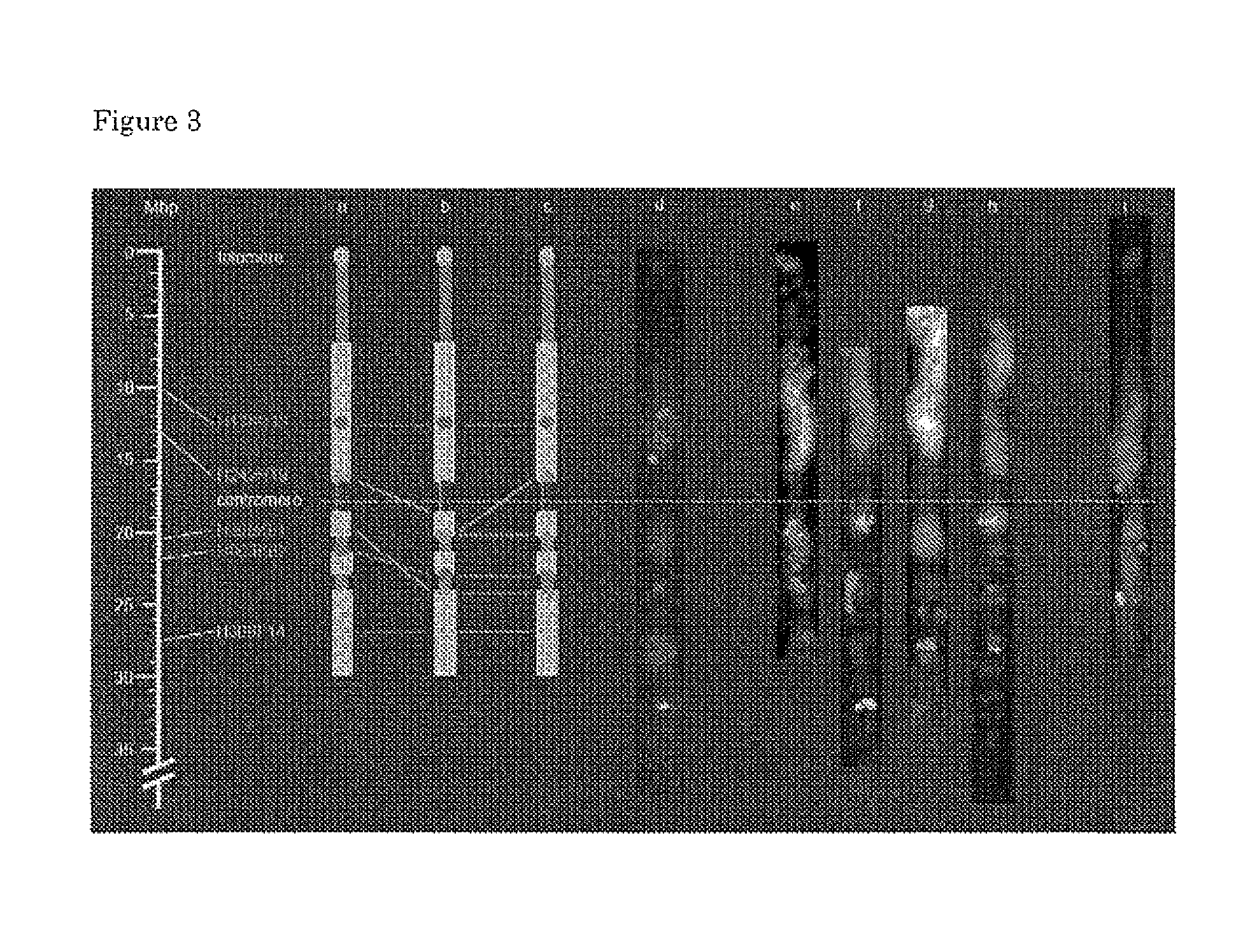Tyclv resistance
a technology of tylcv and resistance, applied in the field of plant biotechnology, can solve the problems of difficult disease management of tylcv, complicated taxonomy classification, stunting, yellowing, etc., and achieve the effect of compromising ty-1 conferring resistan
- Summary
- Abstract
- Description
- Claims
- Application Information
AI Technical Summary
Benefits of technology
Problems solved by technology
Method used
Image
Examples
example
Materials and Methods
[0120]Plant Material
[0121]Two F2 populations in which Ty-1 is segregating were provided by breeding companies within the Centre for BioSystems Genomics (CBSG). Both populations were derived from commercial hybrids harboring the Ty-1 gene that is introgressed from S. chilense LA1969 in the genetic background of cultivated tomato S. lycopersicium. Plants that were selected from a recombinant screening were selfed and their F3 progenies were used for further testing with TYLCV. As susceptible control S. lycopersicum cv Moneymaker (MM) was included.
[0122]Markers
[0123]All markers used in this study are PCR-based CAPS markers taken from publicly available data (Table 2). Tomato BACs in the region of Ty-1 and Ty-3 were selected according to a physical map of tomato chromosome 6 {Peters, 2009; ibid} (FIG. 2) and sequences were downloaded from the SOL website (http: / / solgenomics.net / ). For each BAC multiple random primer pairs, which would result in products of approxima...
PUM
| Property | Measurement | Unit |
|---|---|---|
| Tm | aaaaa | aaaaa |
| temperature | aaaaa | aaaaa |
| temperature | aaaaa | aaaaa |
Abstract
Description
Claims
Application Information
 Login to View More
Login to View More - R&D
- Intellectual Property
- Life Sciences
- Materials
- Tech Scout
- Unparalleled Data Quality
- Higher Quality Content
- 60% Fewer Hallucinations
Browse by: Latest US Patents, China's latest patents, Technical Efficacy Thesaurus, Application Domain, Technology Topic, Popular Technical Reports.
© 2025 PatSnap. All rights reserved.Legal|Privacy policy|Modern Slavery Act Transparency Statement|Sitemap|About US| Contact US: help@patsnap.com



